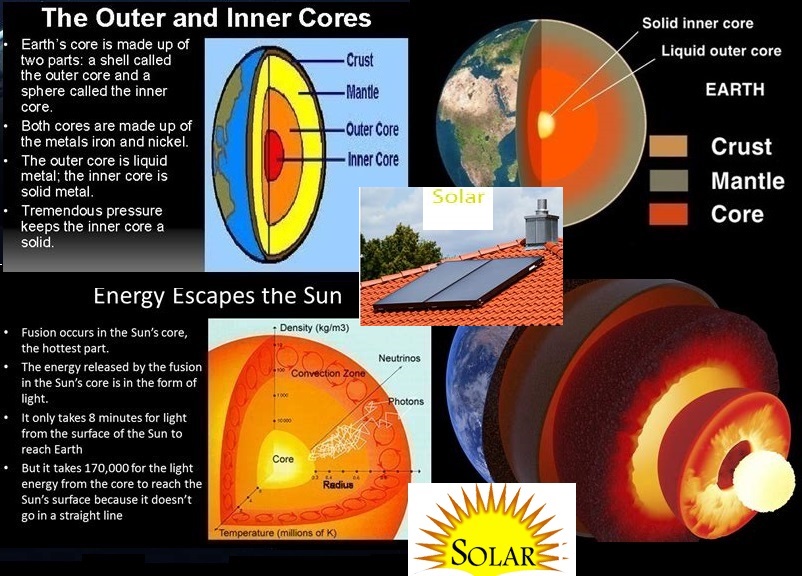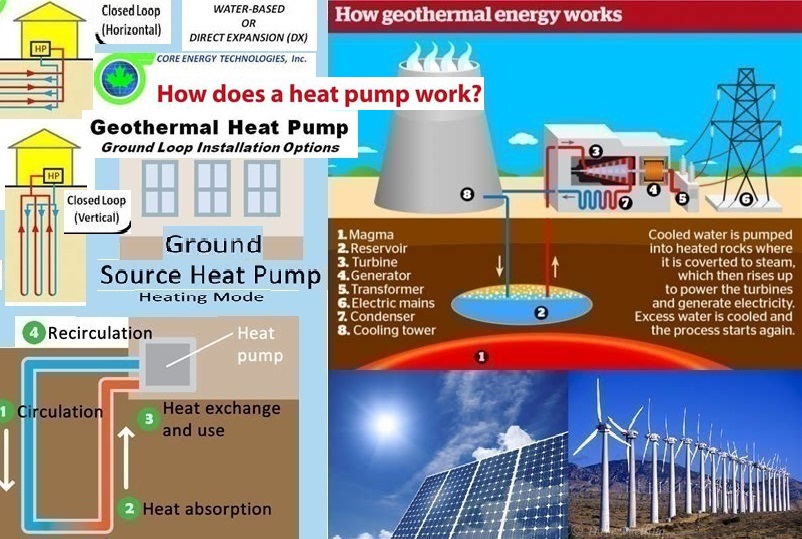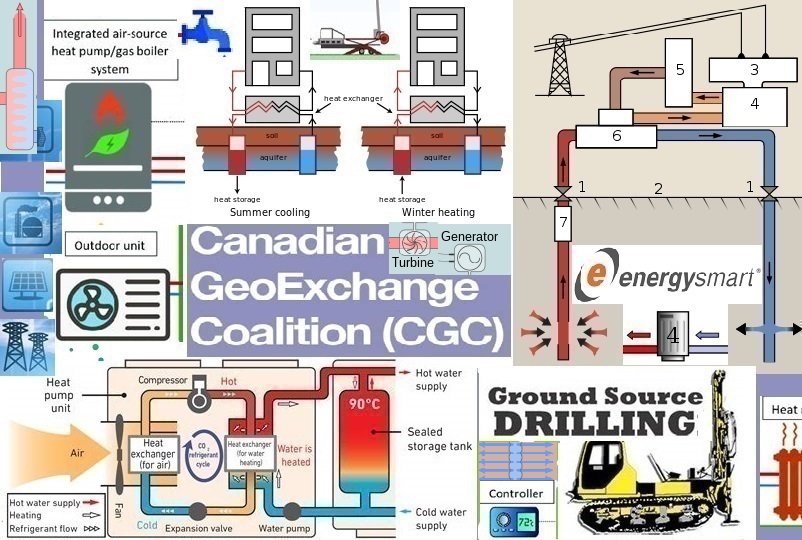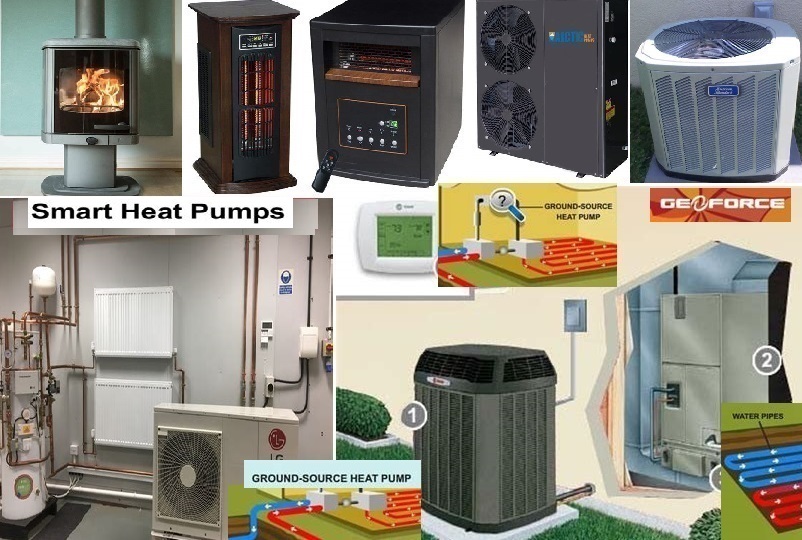
Solar energy is generated from the sun. Every second of the day the sun produces energy through nuclear fusion. Geothermal energy is more dependable than solar energy. Geothermal is protected from weather conditions because it is produced by in-ground units which are sheltered from the weather. Most of the geothermal energy is gained from geothermal power plants fitted near hot springs, geysers, or through volcanic actions. Wells are drilled underground more or less one-and-a-half-mile deep to reach heat or heated gas, which is further accessed with spinning turbines. Heat or steam is then pumped to the surface. The ocean has multiple sources of energy. Tidal energy is a renewable power source that can produce a substantial amount of energy, even in conditions when tides are at their lowest speeds. Besides tidal energy, wave energy is controlled by underwater movement. The advantages of solar energy are its availability, choice of uses, cost-effectiveness, and low maintenance whereas the disadvantages of solar power are that the panels cannot be installed on every roof and that it can be unreliable. The advantages of geothermal energy are that it is environmentally friendly, the heat pumps are efficient, it is great for cooling and heating, it has enormous potential, and it is reliable, renewable, and sustainable. The disadvantages of geothermal energy are that it is expensive (the initial cost is high), it generates waste, it is location-specific, the reservoirs require proper management, and in risky situations it can cause earthquakes.
Geothermal energy (internal heat of the earth) is an energy that is extracted from the ground and can be used through horizontal or vertical tunnels to control the earth level temperature of a home which is known as ground-source heating and cooling. Geothermal energy is a renewable energy source because heat is constantly generated from rocks and fluids at various depths inside the earth. Geothermal heat is used for bathing, to heat buildings, and to generate electricity. Geothermal heating systems do not require outside above-ground equipment because the heat is drawn from the ground and not from the air. The above-ground unit is not exposed to wear and tear of the elements because it is installed indoors; its lifespan is increased, and its maintenance costs are decreased. As cities implement innovative climate goals, geothermal heating is a method to be considered. The most important advantages of geothermal energy that should not be ignored are the supply of heat from the earth’s core that will remain stable for the rest of humanity, the above-ground installations that are less damaging to the ecosystem than hydropower, the fact that its ecologically friendlier than non-renewables, its non-dependence on climatology, and its economic investment. Improved geothermal systems can access heat energy deep in the layers of the earth. A geothermal system does not burn fossil fuels to produce heat. Geothermal power is electricity or heat created from geothermal energy. With the rising cost of fossil fuels, there is a demand for renewable energy sources. Most of the nation’s electricity is generated by hydropower (waterfalls and steam). Hydrogen is everywhere in nature but attached to other chemical elements. If the electricity used to create hydrogen is accessed from renewable sources, it is known as ‘green’ or ‘renewable’ hydrogen and does not yield the carbon dioxide emissions that promote climate change.
Geothermal energy is a method of energy variation in which heat energy from within the earth is removed for purposes such as bathing, cooking, electricity, and space heating. New research shows that geothermal energy is more advanced than current technologies like batteries to store extra renewable energy from solar and wind power. Nature has provided geothermal energy as a ready-made source of energy; clean, green, renewable, and sustainable. It qualifies as the prime replacement for fossil fuels (coal, natural gas, and oil). The three categories of geothermal plants are binary cycle power stations, dry steam power stations, and flash steam power stations. All these stations use steam turbines to generate electricity. The geothermal heat pump (GHP), also known as the GeoExchange earth-coupled (ground-source or water-source) heat pump uses the steady temperature of the earth as the transitional medium instead of the outside air temperature. The GHP is a very effective renewable energy technology for commercial as well as residential buildings. Geothermal cooling and heating cost substantially less than conventional heat pumps. GHPs are used for cooling, space heating, and water heating. Geothermal power generation is a system of producing clean power by removing heat energy from the ground. Geothermal systems extract the earth’s heat in fluids such as steam or water. To generate electricity and heat, deep-ground geothermal power is unlimited as a source of renewable energy. Electricity from ocean and deep-ground geothermal sources should be the global norm for electrical and heating power. It can be used together with other forms of renewable energy to create a hybrid system.
Natural Resources Canada (NRC) is the department of the Government of Canada responsible for earth sciences, energy, forests, minerals and metals, natural resources, mapping, and remote sensing. The department was formed in 1994 by merging the Department of Forestry with the Department of Energy, Mines and Resources. NRC is dedicated to developing the quality of life for Canadians by verifying that the country’s ample natural resources are improved in a competitive, inclusive, and sustainable way. Natural Resources Canada funds technologies to remove battery-grade lithium from geothermal brines, offering a local and cost-effective source of this crucial material. Geothermal brines are a by-product of geothermal power, so is lithium (apart from other minerals). DEEP Earth Energy Production Corporation (DEEP), the Canadian geothermal power resources developer, has accomplished an important breakthrough with funds from NRC upon completion of a strategy for the construction and engineering of the company’s first geothermal project in southeast Saskatchewan. Organic Rankine Cycle (ORC) technology will be used for the power plant. DEEP’s geothermal well field design is leading edge technology that will be applied for the first time on a renewable energy project; it might become a global renovative method for modern gas and oil drilling. Wells with equal depth and lateral length are regularly drilled in the hydrocarbon resource works of the Western Canadian Sedimentary Basin. DEEP will leverage this local expertise and drilling skill. In a nutshell, ORC is a vital technology that uses distributed heat sources to create emission-free power for electricity production. The methodology offers the world’s most adaptable ORC platform in a small to medium power range.
An Organic Rankine Cycle (ORC) system is a closed thermodynamic cycle which is used to generate power from low to medium-high temperature heat sources and for small-medium applications at any temperature. The technology permits the handling of low-grade heat that would else go to waste. While ORC uses thermal heat to change water to steam (which expands through a turbine to produce electricity), ORC uses an organic fluid (instead of water) at a considerably lower boiling point, thus enabling the use of heat from sources with lower temperatures. Using an established ORC process enables liquids or gases to transfer thermal heat for carbon-neutral power (whether the heat is generated from geothermal sources or from commercial or industrial waste. Organic Rankine Cycles are receiving increased attention for the exploitation of waste heat as they allow power production from resources of low thermal matter. The process relies on the vaporisation of a functioning fluid to operate a turbine, while the expanded vapour is reduced and pumped back into the vaporiser.
There are two types of geothermal heat extraction namely geothermal energy and Geothermal Heating Ventilation and Cooling installations (HVAC). The sustainable, renewable, and environmentally friendly energy sources namely solar, wind, tide, wave, geothermal energy, and HVAC distinguish themselves as they provide storage security and supply. Geothermal energy is the group of huge, value-scale plants that extract thermal resources from the inner heat of the earth. Being a form of solar energy, HVAC or other forms of geothermal energy have been used by over seventy countries while more countries have access to geothermal resources. Many geothermal power plants are in volcanic areas where geothermal energy is easily available. Such self-regulating systems use the thermal energy of the earth’s magma (absorbed sunshine, deep dry rock, mineral radiation, and hot underground water). Geothermal heating and cooling use the stable temperature of the earth (fifty-five degrees Fahrenheit) or groundwater in a well together with an electric heat pump. Water is pumped through underground tubes or from a well. Residential geothermal heating functions by burying pipes filled with liquid several feet below the surface of the earth. This is done in the yard or under the driveway. The liquid in the pipes absorbs the trapped heat energy and transfers it to the geothermal heat pump in the basement. Geothermal heating is almost the same as producing geothermal electricity in that the geothermal water passes through a heat exchanger to warm a secondary liquid (in this case additional water) that is applied in all standard cooling and heating procedures.
The United States Department of Energy (DOE) focuses on prospects to develop affordable and clean geothermal power. The Department of Energy’s Geothermal Technologies Office (GTO) decreases costs and risks related to geothermal development by being supportive of innovative technologies. Local, federal, and state government programs promote geothermal energy developments. Geothermal Government Programs accepted by the GTO are the following: One -the California Department of Conservation Geothermal Section manages the drilling, operation, maintenance, plugging, and abandonment of geothermal wells on private and state land to guard underground and surface waters and to warrant public safety. Two – the California Energy Commission Geothermal Program promotes California’s geothermal energy development by including financial and technical support to assist with commercialisation projects, aptitude projects, and planning. Three – GeoPowering the West, a U.S. Department of Energy program, works with the U.S. geothermal industry, industrial and residential consumers, power companies, and federal, state, and local officials to provide institutional and technical assistance and limited, cost-shared funding to state-level activities. Four – State Energy Alternatives feature renewable energy resources (including geothermal), policies, and technologies. Five – Technology-Specific Super Energy Savings Performance Contracts (ESPCs) – Geothermal Heat Pumps provide information about the U.S. Department of Energy, Federal Energy, the Management Program’s industry contracts to install geothermal heat pump systems in federal buildings. Six – the U.S. Department of Energy Tribal Energy Program provides data about Native American renewable energy projects (including geothermal energy projects) and funding opportunities. Seven – the U.S. Navy Geothermal Program develops and manages geothermal resources on all military land for the U.S. Department of Defence.
Geoengineering is broadly defined as a delay of global warming, ‘climate-altering technologies’ or ‘climate intervention’, the concept of humans intervening with the climate system to regulate the climate, streamlining the effects on the environment, and the deliberate large-scale alteration of the atmosphere to avoid further climate change. This includes extensive interference with the atmosphere, the weather, the oceans, and the earth itself. The two primary groups of geoengineering procedures to relieve climate change and reduce carbon emissions are solar radiation management (solar geoengineering or sunlight reflection) and carbon-dioxide removal (carbon geoengineering or carbon removal). SRM (solar radiation management) strategies focus on reflecting sunlight back into space. It includes a sequence of theories, from orbiting mirrors, tons of sulphates scattered into the stratosphere, and altering clouds, ice, plants, and other reflective surfaces to reflect more sunlight with the goal of cooling the planet. Easier methods with viable results include painting roofs and streetlights in colours that reflect sunlight rather than colours that absorb sunlight. CDR (carbon-dioxide removal) uses carbon-capture technology to remove carbon-dioxide greenhouse gas emissions from the atmosphere and stratosphere to reduce greenhouse effect-induced global warming. It goes further than removing greenhouse gases and enters the sphere of negative emissions. The geologic safety or stability of underground carbon dioxide storage has not been amply researched.
The greenhouse effect is defined as the way in which heat is surrounded and trapped by atmospheric greenhouse gases close to the earth’s surface. The result of the heat-trapping gases is like a blanket draped around the earth causing the planet to ‘warm up.’ Greenhouse gases contain carbon dioxide, nitrous oxides, methane, and water vapour. Human actions are responsible for the increase in greenhouse gases. In the United States, the main contribution of human greenhouse gas emissions is the burning of fossil fuels. Heat pumps are a greener method of clearing fossil fuels than gas heat. Replacing all or part of a home’s heating requirements with high-efficiency heat pumps will reduce its greenhouse gas emissions. There are several other ways of heating a home to qualify as a ‘green home.’ With newer technologies such as lower sulphur blends mixed with biofuels, heating oil is now a clean fuel. The Green Heat Infrared Heater has a modern tower design and is space efficient. This compact infrared heating technology has two infrared quartz glass tubes covered with metal. Another popular green heating option is to install a pellet stove. This is a fireplace made from steel plates, cast iron, and glass. A green certificate verifies that electricity is produced by a renewable (green) energy source. The certificate is also known as Renewable Energy Certificate (REC), Renewable Obligation Certificate (ROC), or as a Guarantee of Origin (GO or GoO) from a ‘green’ energy source.
Due to climate change, future heatwaves will be more frequent and intense. With the goal to preserve habitability, approaches such as geoengineering were developed to decrease atmospheric temperatures and alter climate change and global warming. A cooler world would be able to ward off the aftermaths of greenhouse gas emissions. Scientists are hopeful that geoengineering might succeed in reversing the two degrees Celsius global warming and even refreeze it.
















